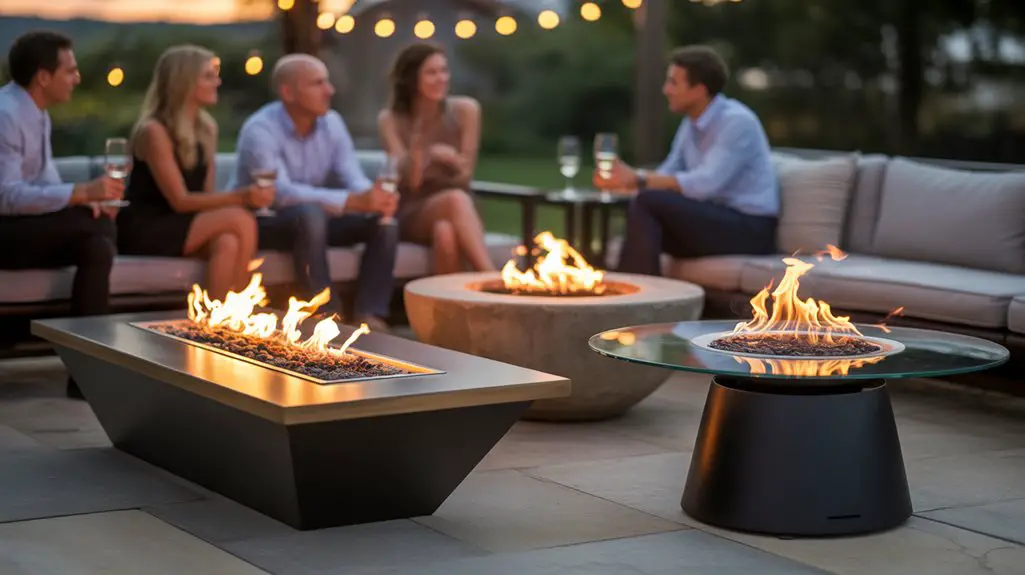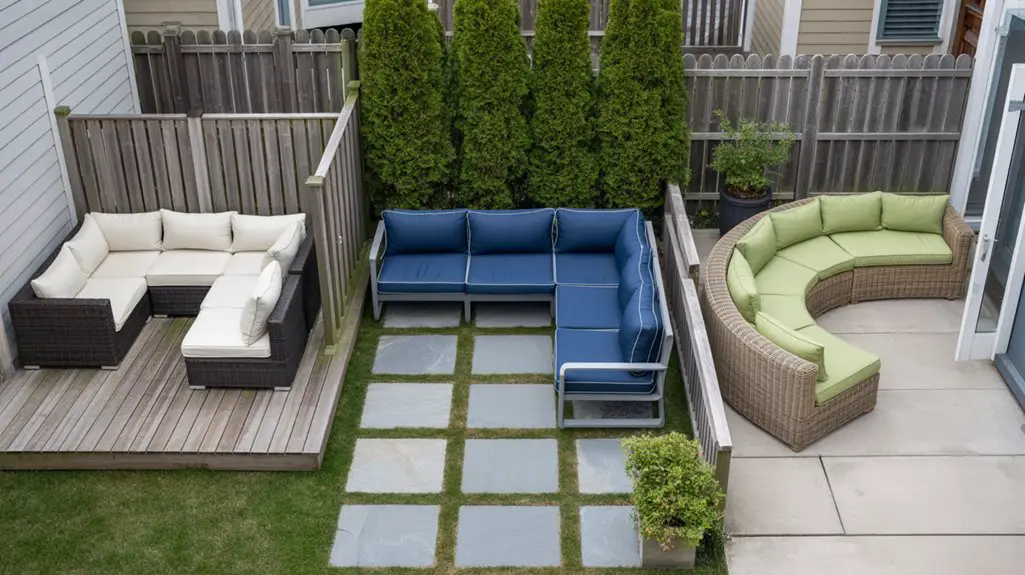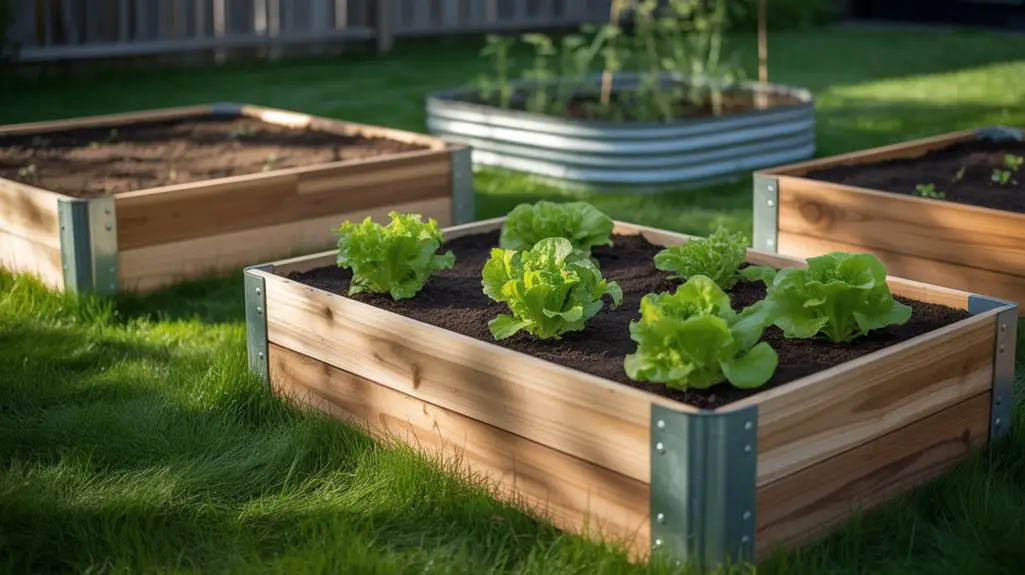Play sand is different from beach sand. It is less coarse, a more refined version of beach sand, and undergoes particular processes to ensure dust and contaminants are filtered away. It is the safest and children can play with no harm.
You might take sand as simple as it appears, but there are many more differences to learn in choosing the best sand for kids. When looking for play sand, you want sand that lasts and is a safe place for children to play.
But with sand being almost everywhere, it is vital to know the best play sand. The beach sand is composed of various dangerous components like dead corals, shells, and dust that would trigger child illness.
It does not go through the cleaning and sifting process to make it safe. This article provides you with information on the differences between play sand & beach sand and the best method of testing play sand.
Looking for a Sandbox?
Why not create your own? Here is how to create a DIY Sandpit.
Differences Between Play Sand and Beach Sand
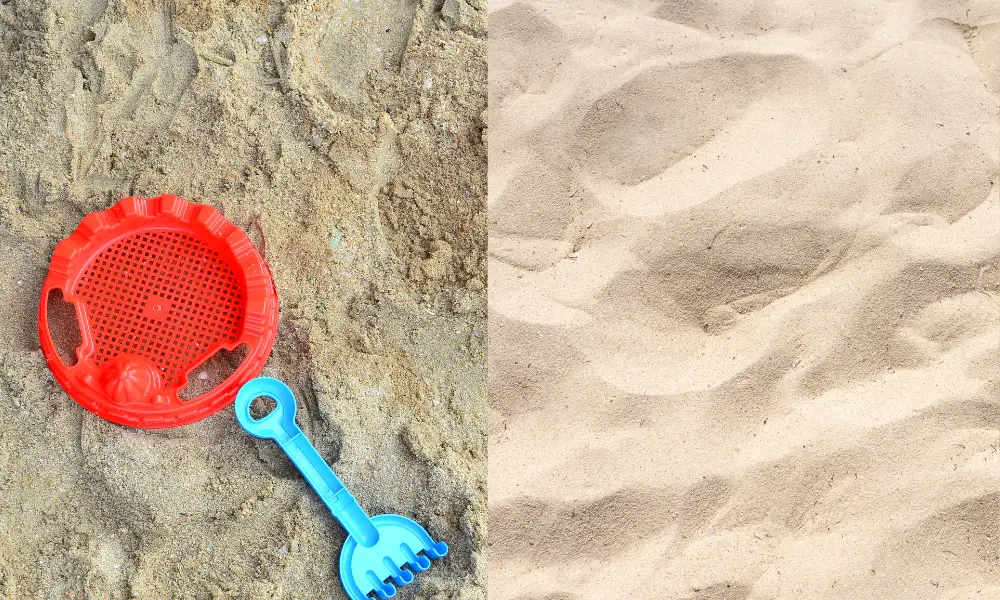
Play sand is known to have a more delicate texture and a soft touch. In comparison, the beach sand has a rougher texture.
Additionally, the sand grains found in beach sand have sharper edges and are rough upon touching. When observing play sand under a microscope, sand particles appear to be round, smooth, and softer on touch.
The beach sand color is usually snow-white, tan-brown, or reddish tint resulting from iron oxide present in the sand. Meanwhile, the play sand is usually light cream. Its cleaning and preparation process washes out unwanted contaminants and oxides, making it even lighter in color.
The dust content in the two types of sand makes a significant difference. The play sand is silica-free through a preparation and cleaning process, making it safe for the kid to play. It is suitable for children with breathing problems or allergies to dust.
However, the beach sand has a lot of dust content, mainly when dry. The dangerous microcrystalline silica is a concern to kids’ health in case it is inhaled.
Play sand is stickier and does not crumble down easily as compared to beach sand. Play sand is preferred for modeling and playing with children.
The beach sand grains do not grip easily due to their rough and shaper edges. The cavities created between the sand particles make it crumble down.
What are the Best Methods of Testing Play Sand?
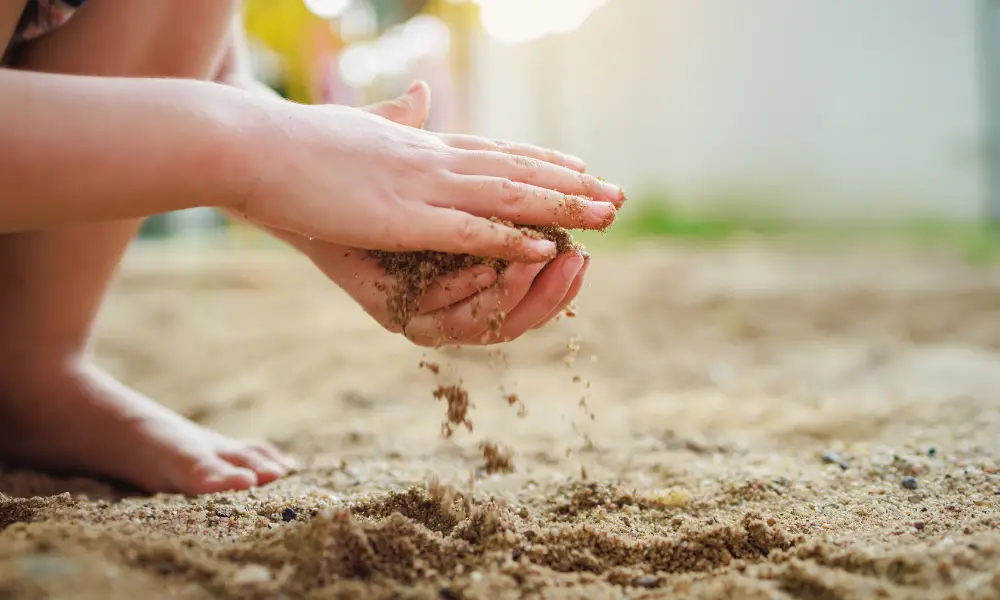
There are varieties of play sand. It would be best to perform the following tests on your sand to check whether it is the best play sand for your children
If the cleaning of the play sand is not thorough, it is likely to form dust clouds. Such type of dust is unsafe for adults and kids playing with it.
So, here is how to carry out the test. Fill a clear container with sand (at least 3-4 cups). Doing it outdoors, pour the sand onto a plain plate.
If any dust is seen, then the sand was not washed correctly or screened to remove the dust particles.
The uniformity of sand particles is crucial in modeling. The test illustrates how some play sand contains foreign particles.
When you perform the test, it should resemble pure white sugar, which is uniform in grain size, color, and texture.
If the sand fails the test, it is an excellent indicator that your sand will be dusty, coarse, dirty, and complex in creating molds. Unfortunately, most parents do not know that there are varieties of options when looking for play sand.
Therefore, to test the uniformity in your play sand, here is how you do it. With the help of a kitchen strainer, randomly scoop sand from the sandpit.
Then strain it to see what is left behind. If there are large particles, then the sand failed the sugar test.
The test illustrates how different sand from different manufacturers perform when molding and building sandcastles. If your play sand fails the test, then it significantly affects the child’s ability to have fun in molding, developing, and being creative in a sandpit.
Sand grain uniformity keeps your child active in building tall and strong sandcastles. Here is how you can perform the sandcastle test.
Now that you have the right amount of water in your sand, pack the sand tightly into the molds. Then, turn over the mold and tap it with the shovel (a tablespoon) as you pull it up.
That will ease sand release and have the best results.
What are the Benefits of a Sandbox?
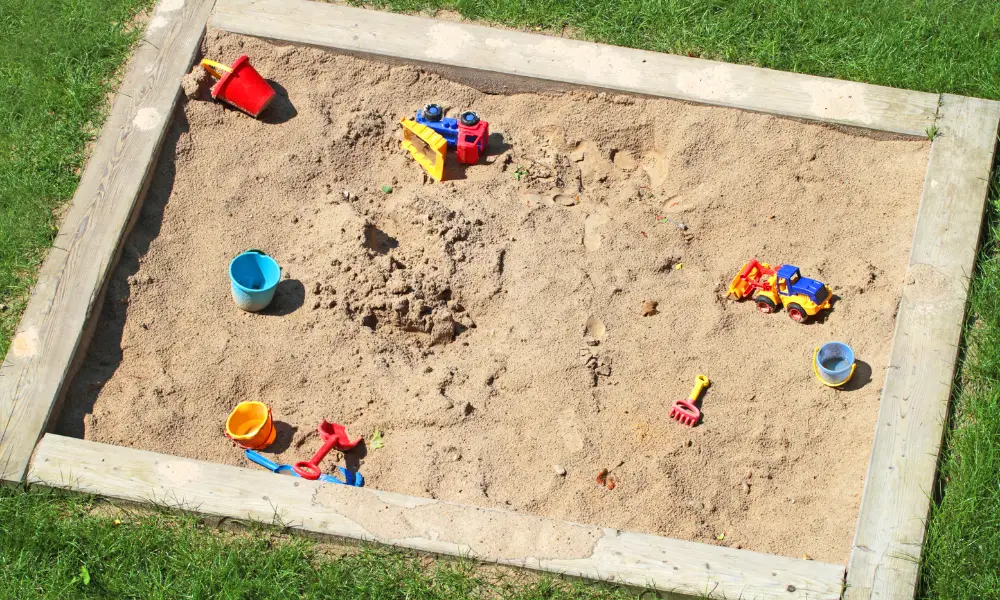
Sandboxes are the ideal playground for indoor or outdoor sand playing. They are good at holding sand together without spilling over as kids play.
However, a sandbox offers more benefits in the development of the child. Some of them include:
Can I use Beach Sand in the Sandbox?
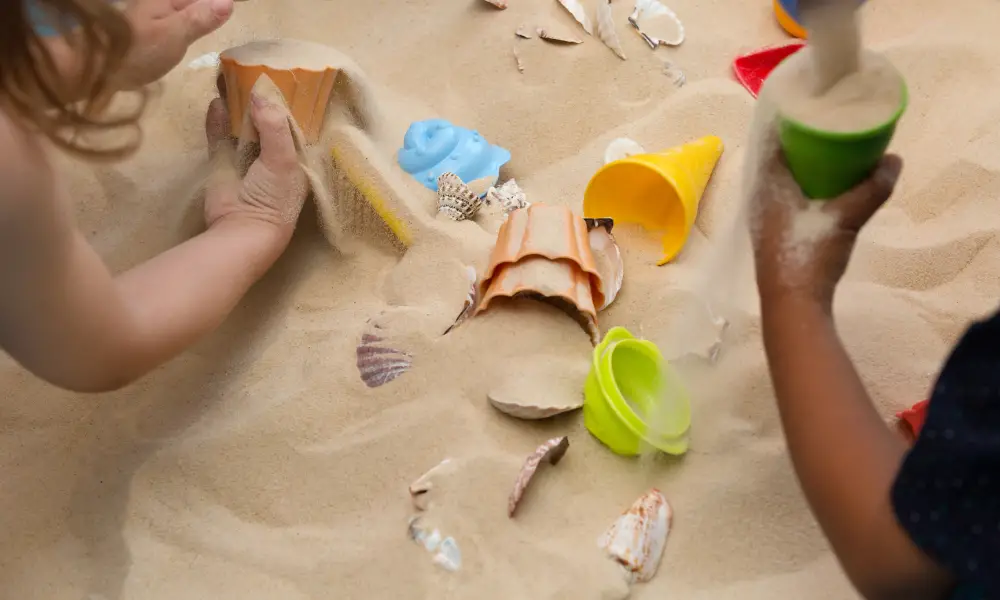
The beach sand cannot be used in sandboxes. The sand has many toxic sand particles and harmful silica dust that are harmful if inhaled in huge quantities.
Its particles and grip cannot hold together, making it hard for children to play and build castles. If you want sandcastles to hold up it’s best to use Kinetic sand as it holds a mold very well.
The best sand for your sandbox should be well-cleaned and undergo a purification process. That will assure your child’s health, and you do not have to worry, here is a list of all the types of sand available.
Conclusion
After getting suitable sand for your sandbox, proper care is essential. Meanwhile, ensure you get suitable sand that meets government regulations.
Ensure that you perform the sand test before exposing your child to the sandbox. By following the guidelines, your children can have fun with you having peace of mind.
There are even more sandbox safety tips we recommend you dive into next.
Please be careful and use at your own risk
None of the authors, contributors, administrators, or anyone else connected with BestPlaygroundSets, in any way whatsoever, can be responsible for your use of the information contained in or linked from these web pages.


